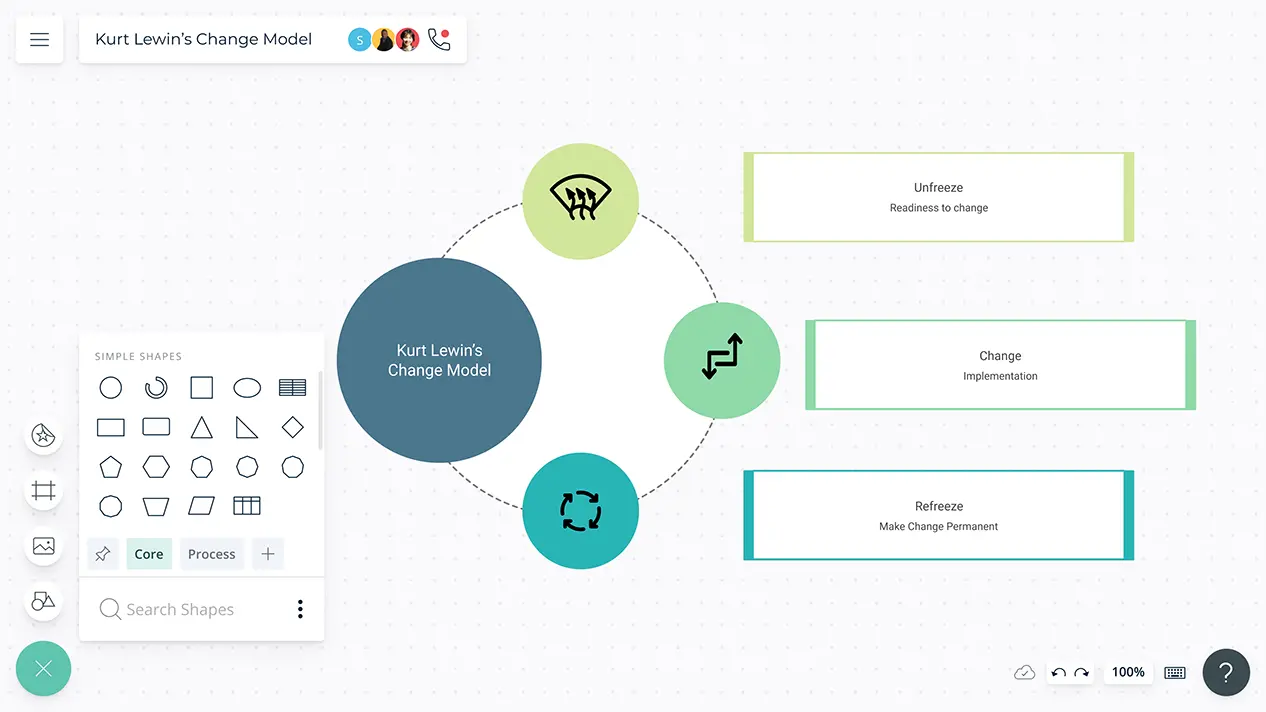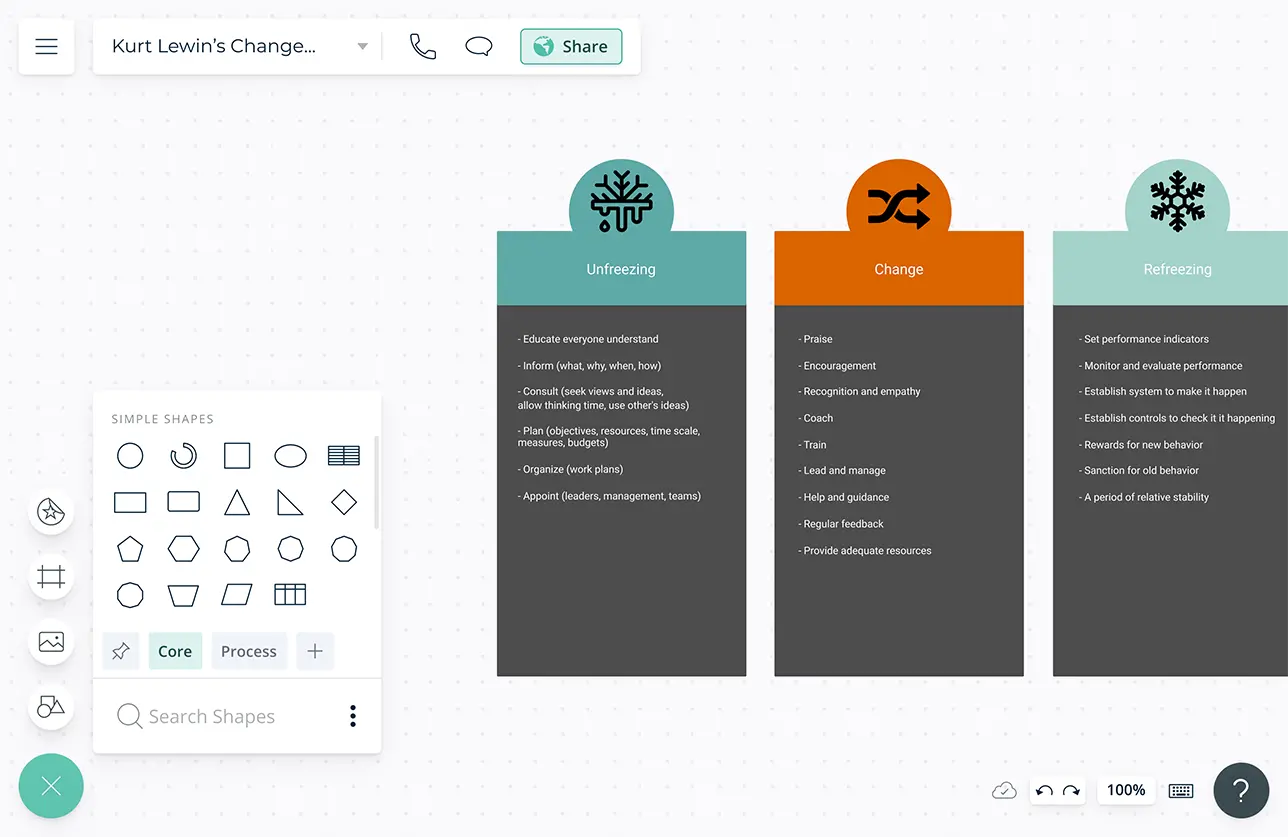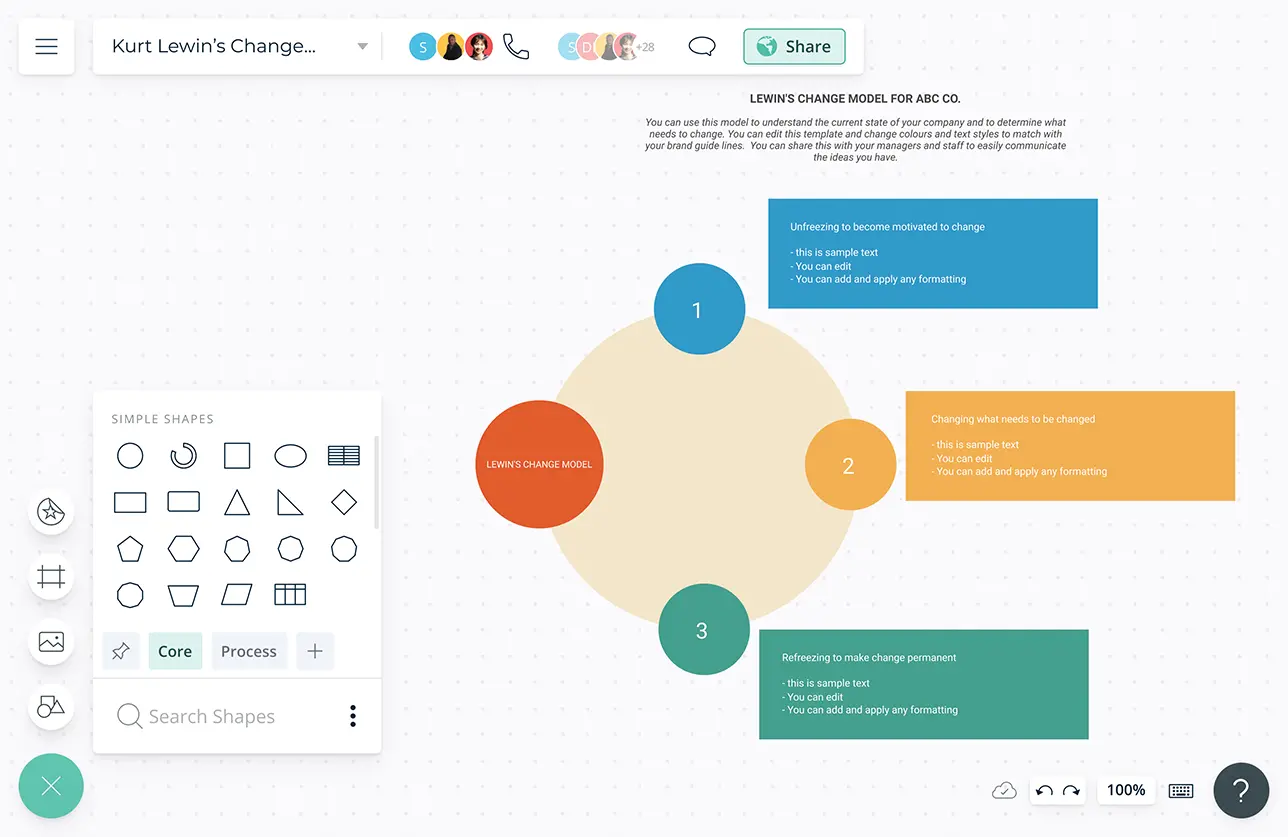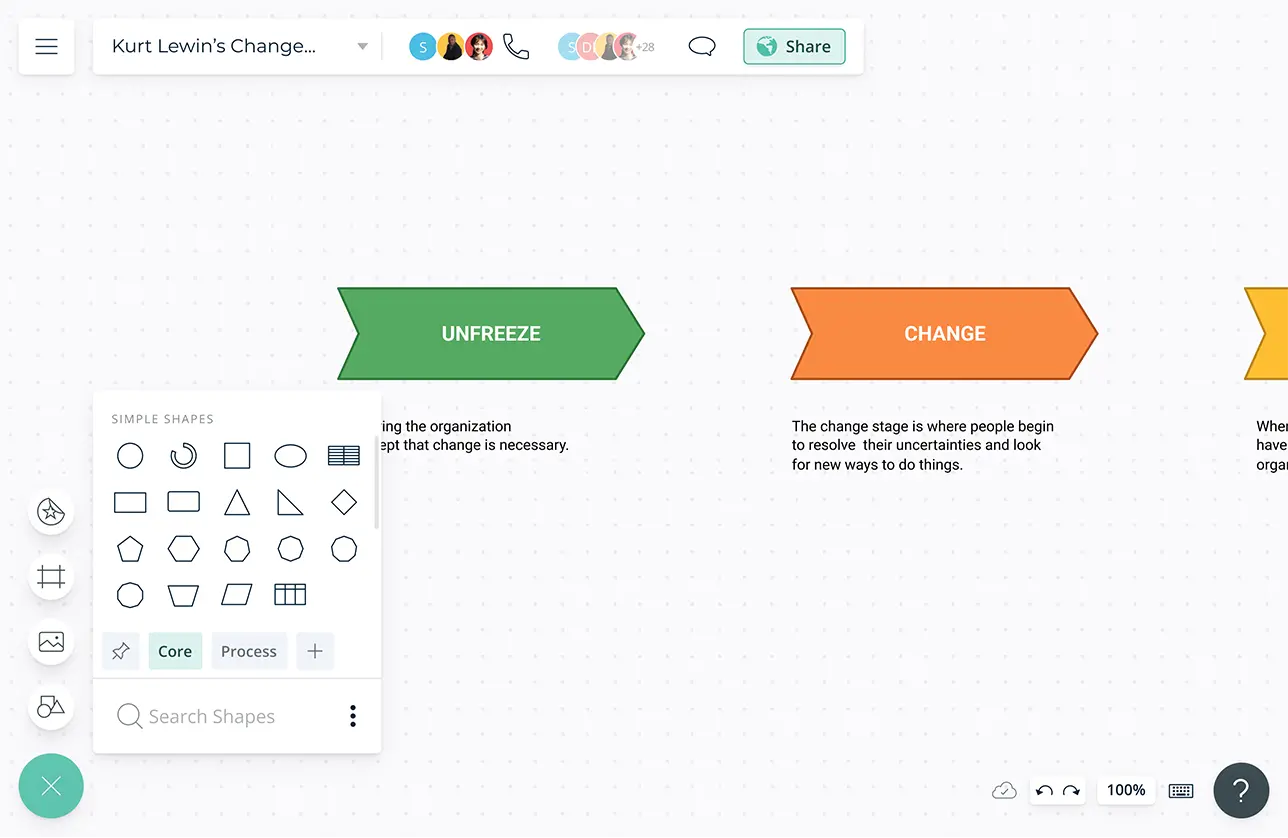Kurt Lewin’s Change Model
Understand Organizational Change Better
Develop and execute effective strategies to implement change across the organization successfully.
- Intuitive visual canvas to develop and execute change initiatives
- Real-time collaboration to work with colleagues and stakeholders
- Multiple templates & frameworks for change management planning

- Intuitive visual canvas to develop and execute change initiatives
- Real-time collaboration to work with colleagues and stakeholders
- Multiple templates & frameworks for change management planning


Easy Tools for Planning Change

Professional diagramming and brainstorming tools to ideate, plan, and strategize around organizational improvement and change initiatives.
Multiple templates and frameworks for analyzing processes, setting goals, action planning, resource allocation, strategic planning, and more.
Built-in tools to organize your plans and create interactive presentations instantly to onboard stakeholders on change management plans.
Add detailed docs, attachments, links and more via the notes feature on each item to capture details and the big picture in a single space.
Data-enabled visuals to bring data from multiple sources into a single canvas to connect information together.
Collaborate with Stakeholders, Anytime, Anywhere

Video conferencing baked into the platform to feel as if you are in the same room.
Real-time cursors for any number of participants to work simultaneously on a single canvas.
Comment with context, have discussions and follow-ups on the same canvas. Async!
Full version history to keep track of key points during each iteration of your planning session. Branch out from an earlier version if needed at any time.
Multiple access and role levels to streamline sharing, reviewing, and editing strategic, communications, and change management action plans.


A Better Way to Manage Your Change Initiatives

Multi-perspectives diagramming to generate several views of the same information to understand and explain your change management strategies from different perspectives.
Multiple integrations to easily connect with popular platforms like Github, Slack, Google Workspace, Confluence, and more.
Prioritization grids to visually rank action items for effort and impact, and plan and assign tasks.
Assign tasks to complete items in context. Link tasks to or from other project management tools seamlessly.
Set estimated times and due dates for tasks and allocate resources based on availability and skill sets.
What Is Kurt Lewin’s Change Model?
Kurt Lewin’s Change model is a framework used for understanding and managing organizational change. Introduced in 1947 by Kurt Lewin as an approach to change management, the three step model (Unfreeze-Change-Refreeze) is still widely used by organizations to institute change. Lewin stated that change for an individual or an organization is a complicated journey and may involve several stages of transition and misunderstanding before accomplishing a state of equilibrium. Using the analogy of changing a block of ice into a cone of ice, he explains how to implement change successfully; first melt the block of ice to change it, mold the ice water into the desired shape, solidify or refreeze the mold to make the change permanent.
The Three Steps of Lewin’s Change Theory
1) Unfreeze
- In this initial stage of change, readiness of change should be ensured. This entails preparing the organization to understand and accept the criticality of the need for change.
- Conduct a current state assessment to understand what needs to be changed and break down the status quo challenging the existing practices and introducing new ways of doing things.
- This stage also requires gathering support from key stakeholders for initiating change.
- Clearly communicate the vision of transformation and the need for change across the organization.
- Address any employee skepticism and apprehension towards change by continuously explaining the need for discontinuing the existing ways.
2) Change
- Once everyone is ready to make the transition, it’s time to actually implement the required changes. This period of transition is often difficult for the people involved as it brings with it many uncertainties, therefore time should be allowed for them to adjust.
- Meanwhile, throughout this stage, the leadership should continue to consistently communicate the need for, benefits, and effects of transitioning to employees and hence prepare them for the future. Conduct regular sessions to answer their queries and uncertainties.
- In addition, the senior management can role model the desired behaviors and attitude and empower and motivate the rest of the employees.
3) Refreeze
- This stage involves reinforcing and institutionalizing the implemented changes and ensuring that they are widely accepted, and constantly utilized, and embraced by employees. The aim of this stage is to instill a new sense of stability and confidence in what they perform, and help them feel comfortable in the new ways of working.